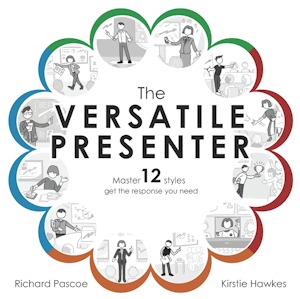By Richard Pascoe, Company Director and Lead Trainer at Making Presentations
We all know that we have to learn to present well. A cornerstone of our work is to convincingly put across our business-building ideas. Get good at pitching or find a new career! The issue here is it’s not that simple. One way is not enough. We must all become experts at different types of sales presentation.
I joined Procter & Gamble in 1998 as an account manager selling Pringles and Sunny Delight into a range of independent retailers across the North East (do you remember Jackson Stores?). I was taught the Persuasive Selling Format: summarise the situation, state the idea, explain how it works, reinforce the key benefits, and close with easy next steps. I got good at presenting a business idea so that the buyer could understand what I was offering.
In time, I moved through different NAM roles: managing Old Spice in Boots, Ariel and Bold in Asda. And I found a problem. The Persuasive Selling Format was not enough. I found that many presentations were not a selling presentation.
When I met a new buyer for the first time, my aim wasn’t really to pitch an idea. I was there to build a trusting relationship. I needed to present in a way that relaxed them, got a conversation going, and left them feeling ours was a business relationship worth investing in. If they declined the thing I was selling that day but felt open to what I might sell them tomorrow, all was good.
I looked at the best salespeople and noticed how they adapted their focus in new client calls. Some encouraged a little informality, “let’s chat over a drink”. Some focussed on praising the client, “I went instore – I love what you have done with the fixture”. Some framed themselves as independent thinker, “let’s cut through the games and share what really matters to each of us.”
Once the trading relationship developed, I could look to start selling – making a pitch presentation. However, there was still an issue: often they did not need convincing. Rather, they just needed the relevant information to check through the thinking.
Some salespeople fell into the trap of “always be selling”. I watched as the buyer got frustrated with the NAM because they continued a hard sell when the buyer was ready to say yes and move on to hard facts.
Finally, once a buyer has confirmed agreement to the business idea, what next? Then we need to present the detailed business plan so that all parties are clear on the next steps to be taken. You cannot simply pass over a colour-coded to-do list. Yet, nothing will appear instore unless they do complete these steps.
The best salespeople I worked with found a way. Many moved into a guiding style of presenting. “Great, we know what we want to do. Let me check through the steps we need to work together on to get this going.” Some made everything seem like business as normal. Others enthusiastically shared the action plan and how it would work. Again, a different style of presenting.
A successful account manager needs to learn to present in different styles depending on the situation. Sometimes we present to build trust. Sometimes we present to sell an idea. Sometimes we present to explain an idea. And sometimes we present, simply, to make clear who does what to make it happen.
 I have always been fascinated how no-one teaches us this in any detailed way. If we are lucky, we have a manager or mentor who knows enough to guide us. But for most of us, we are left floundering. So we decided to write a book to fill the gap. A book that guides you from setting an objective for your presentation through to selecting the style of presentation that will give you the best chance of success.
I have always been fascinated how no-one teaches us this in any detailed way. If we are lucky, we have a manager or mentor who knows enough to guide us. But for most of us, we are left floundering. So we decided to write a book to fill the gap. A book that guides you from setting an objective for your presentation through to selecting the style of presentation that will give you the best chance of success.
The book includes twelve different presenting styles and a process to help you pick one (or more) for any presentation. It’s that simple. The Versatile Presenter: Master 12 styles, gets the response you need.



